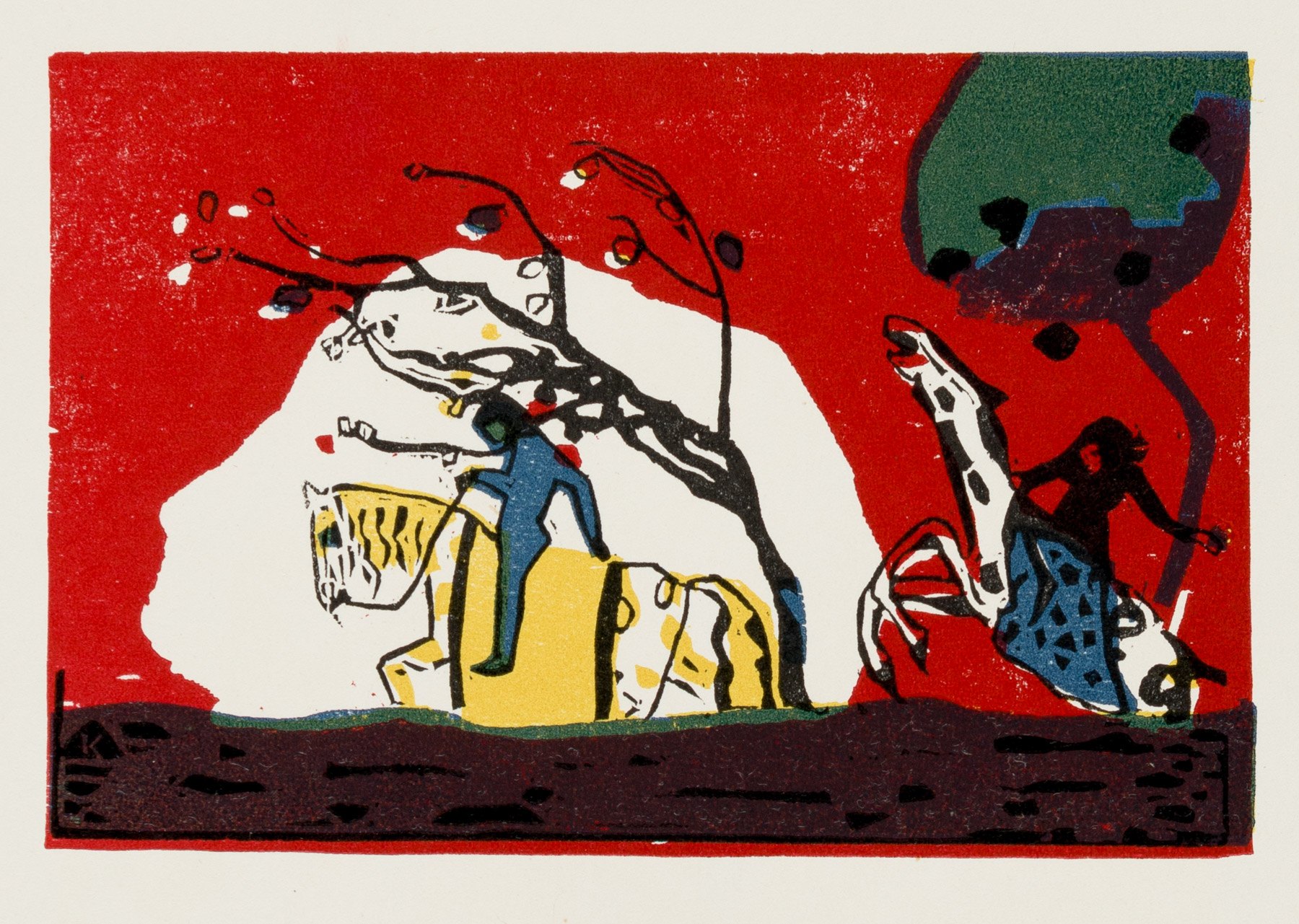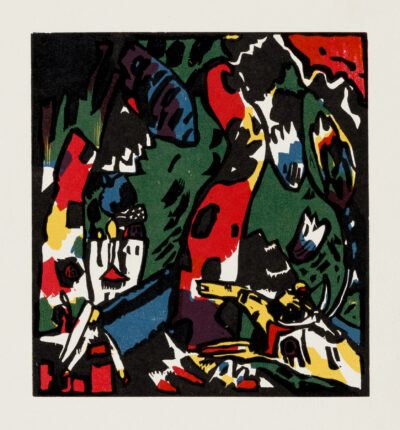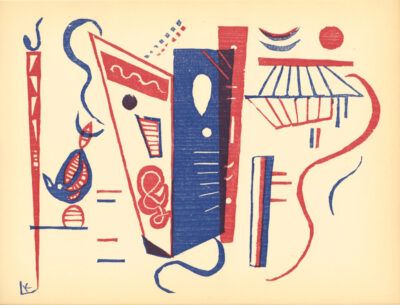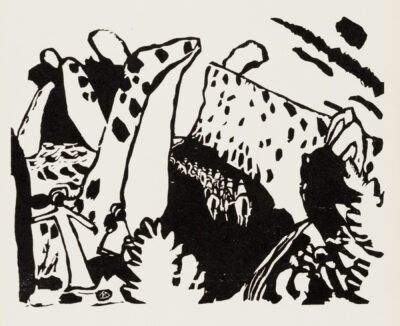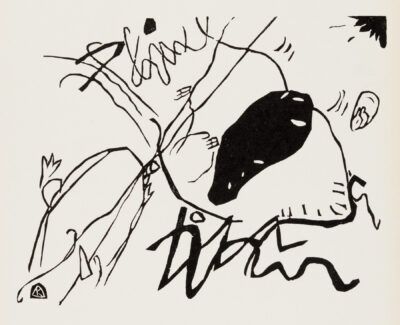Zwei Reiter vor Rot
Wassily Kandinsky
Zwei Reiter vor Rot
woodcut
1911
An original Wassily Kandinsky woodcut print.
(Two Riders against a Red Background)
1911
Original woodcut printed in four colors (yellow, red, blue, black) from four blocks on wove paper.
Signed in the block with the artist’s monogram (the letter “K” in a triangle) lower left.
A superb impression of Roethel’s first state, from the edition of 1,200, published by G. di San Lazarro, Chroniques du Jour, Paris. in XXeme Siecle, vol. I, no. 3, Paris, 1938, illustrating the artist’s essay “Mes gravures sur bois” (apart from the edition of 345 published in Klänge). One of 56 woodcuts originally published in 1913 in the album Klänge.
Catalog: Roethel 95
Size Image: 4 1/8 x 6 ¼ inches
Sheet Size: 12 ½ x 9 ½ inches
Kandinsky’s art is one of the great foundations of 20th century abstract painting. At the time of the formation of the “Blue Rider” group in Munich in 1911 Kandinsky’s two friends, Auguste Macke and Franz Marc, emphasized that the group’s conception of form was based on “mystical and inward construction” and the depiction of “mysterious forces”. As such, there were strong links with Symbolism and with late 19th century French painting. However, the great advance made in Kandinsky’s work of this period was that the elements of pattern and color, instead of being subsidiary or equal to the visual content, were increasingly dominant, to the point at which they became the whole picture itself. In 1912 Kandinsky wrote a treatise, “The Spiritual in Art”, in which he advocates for the first time the creation of an “abstract” picture – that is an evocation of emotion alone without any pictorial content.
